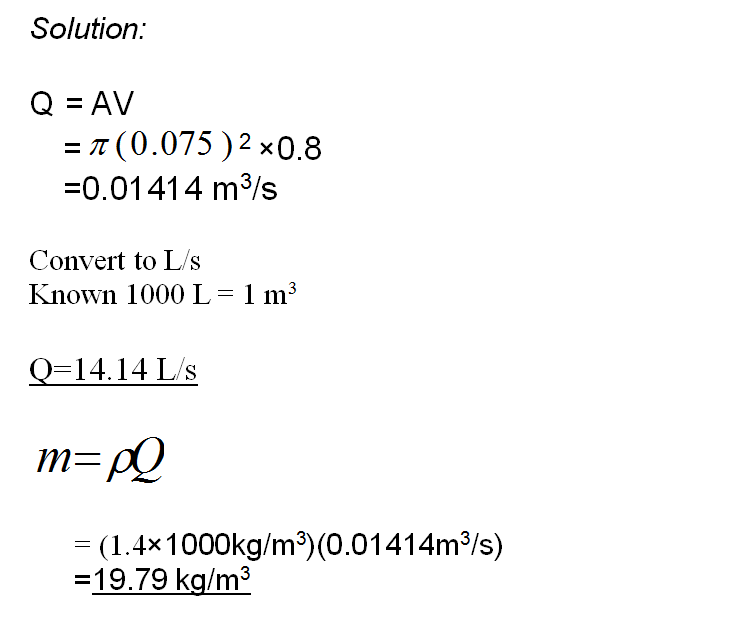Volumetric flow rate units are essential for various industries, including fluid dynamics, engineering, and environmental science. Knowing how to measure and convert these units can significantly influence project planning, efficiency, and resource management. The volumetric flow rate represents the volume of fluid that passes through a given surface per unit time, and it plays a critical role in designing systems that involve fluid transport, be it in pipelines, HVAC systems, or even natural water bodies.
In this guide, we will delve into the various volumetric flow rate units, their applications, and how they can be converted from one unit to another. Understanding these units is crucial for engineers, scientists, and anyone involved in fluid mechanics. From liters per second to gallons per minute, each unit serves a specific purpose based on the context in which it is used.
As we explore the topic of volumetric flow rate units, we will answer common questions, clarify misconceptions, and provide practical examples to illustrate the importance of these measurements. By the end of this article, you will have a solid understanding of volumetric flow rate units and how to apply this knowledge in real-world situations.
What Are the Common Volumetric Flow Rate Units?
Volumetric flow rate units can vary based on the region and the specific application. Here are some of the most widely used units:
- Liters per second (L/s)
- Gallons per minute (GPM)
- Cubic meters per second (m³/s)
- Cubic feet per minute (CFM)
- Milliliters per minute (mL/min)
How Do You Convert Between Volumetric Flow Rate Units?
Converting between volumetric flow rate units is a common task in various fields. Here’s a brief overview of how you can make these conversions:
- To convert from liters per second to gallons per minute, multiply by 15.8503.
- To convert from cubic meters per second to liters per second, multiply by 1,000.
- To convert from gallons per minute to cubic feet per minute, multiply by 0.133681.
Why Is Understanding Volumetric Flow Rate Units Important?
Understanding volumetric flow rate units is crucial for several reasons:
- **Efficiency**: Accurate measurements can lead to improved system performance.
- **Safety**: Ensuring that fluid transport systems operate within safe limits can prevent accidents.
- **Cost-effectiveness**: Proper flow rate measurements can help in resource management and cost savings.
What Tools Are Used to Measure Volumetric Flow Rate?
There are several tools and devices used to measure volumetric flow rates, including:
- Flow meters (e.g., electromagnetic, mechanical)
- Orifice plates
- Venturi meters
- Ultrasonic flow meters
How Do Flow Meters Work?
Flow meters operate based on various principles, depending on the type:
- **Electromagnetic flow meters**: Measure the voltage generated when a conductive fluid flows through a magnetic field.
- **Mechanical flow meters**: Use a rotating element to measure the flow rate based on the speed of rotation.
- **Ultrasonic flow meters**: Use sound waves to measure the velocity of the fluid.
What Are the Applications of Volumetric Flow Rate Units?
Volumetric flow rate units find applications in various fields, including:
- **Water treatment**: Measuring flow rates in treatment plants.
- **Oil and gas**: Monitoring flow rates in pipelines.
- **HVAC systems**: Ensuring proper airflow in ventilation systems.
What Challenges Are Associated with Measuring Volumetric Flow Rates?
Measuring volumetric flow rates can present several challenges:
- **Fluid characteristics**: Variations in fluid properties can affect measurements.
- **Environmental conditions**: Temperature and pressure changes can impact flow rates.
- **Equipment calibration**: Regular calibration is essential for accurate measurements.
Conclusion: Mastering Volumetric Flow Rate Units
In conclusion, understanding volumetric flow rate units is vital for anyone working with fluids. Whether you are an engineer designing a new system, a scientist conducting experiments, or a technician maintaining equipment, accurate measurement and conversion of volumetric flow rates can significantly impact efficiency, safety, and cost-effectiveness. By familiarizing yourself with the various units and their applications, you can enhance your proficiency in fluid dynamics and contribute to successful outcomes in your projects.
You Might Also Like
Exploring Queer Theory Now: A Contemporary PerspectiveBeat The Heat With Polar Wind Portable AC: Your Ultimate Cooling Solution
The Unsung Heroes: Celebrating Great Deeds In Everyday Life
Exploring The Fit: Do Hey Dudes Come In Wide Width?
The Unlikely Footprint: Discovering The Smallest Shoe Size In The NBA
Article Recommendations
- Best Vegamovies Nz Sites Streaming 2024
- Exploring The Life Of Mary Burke A Comprehensive Biography
- Cholea Surreal An Insightful Guide To Its Mystique And Significance


